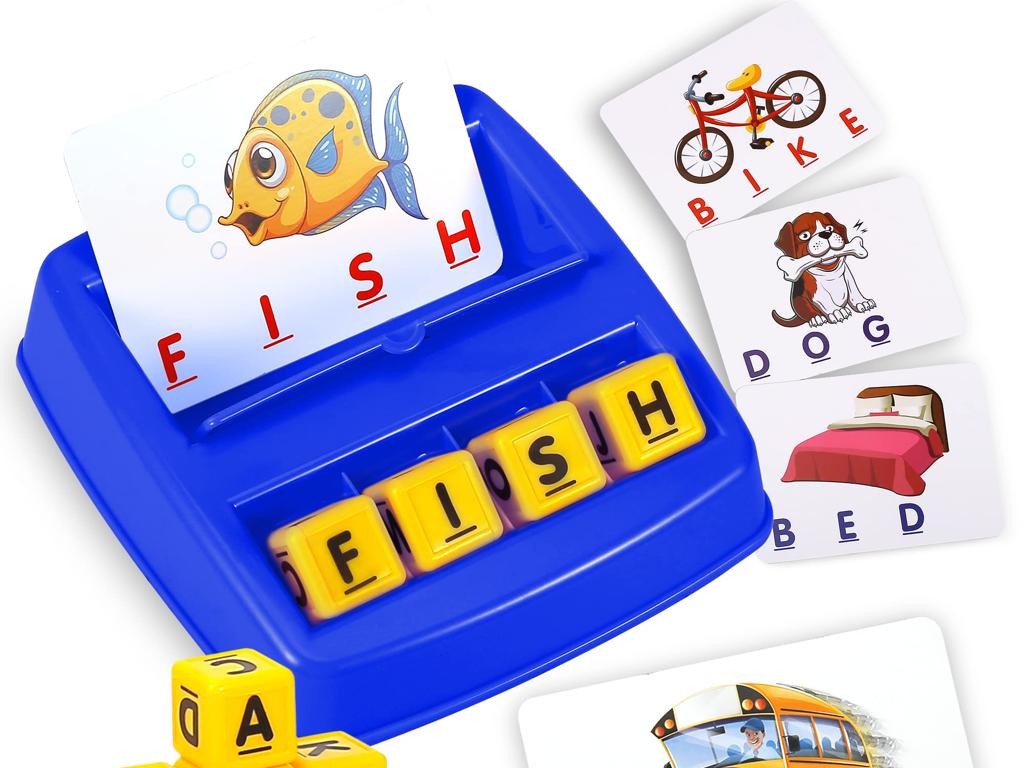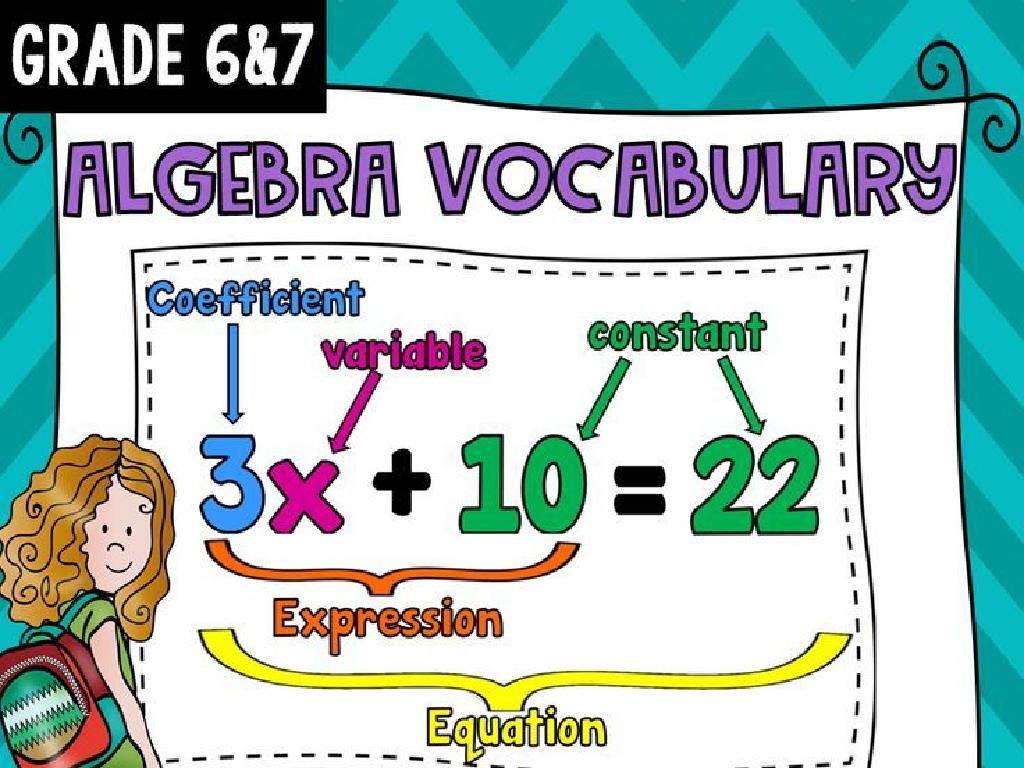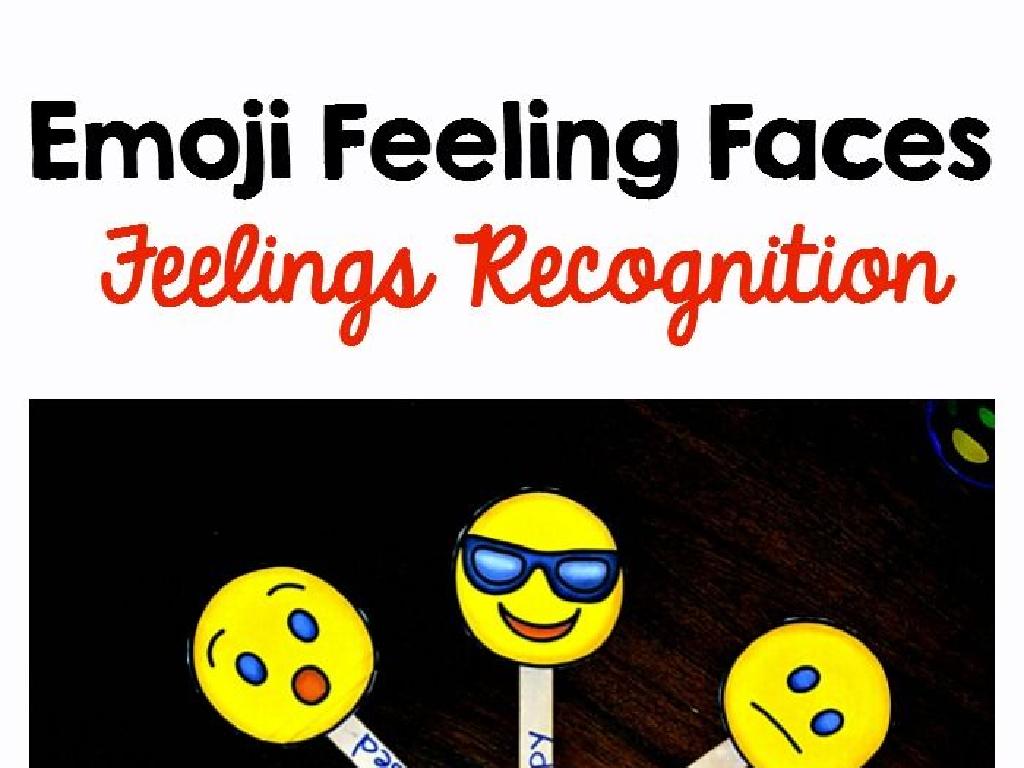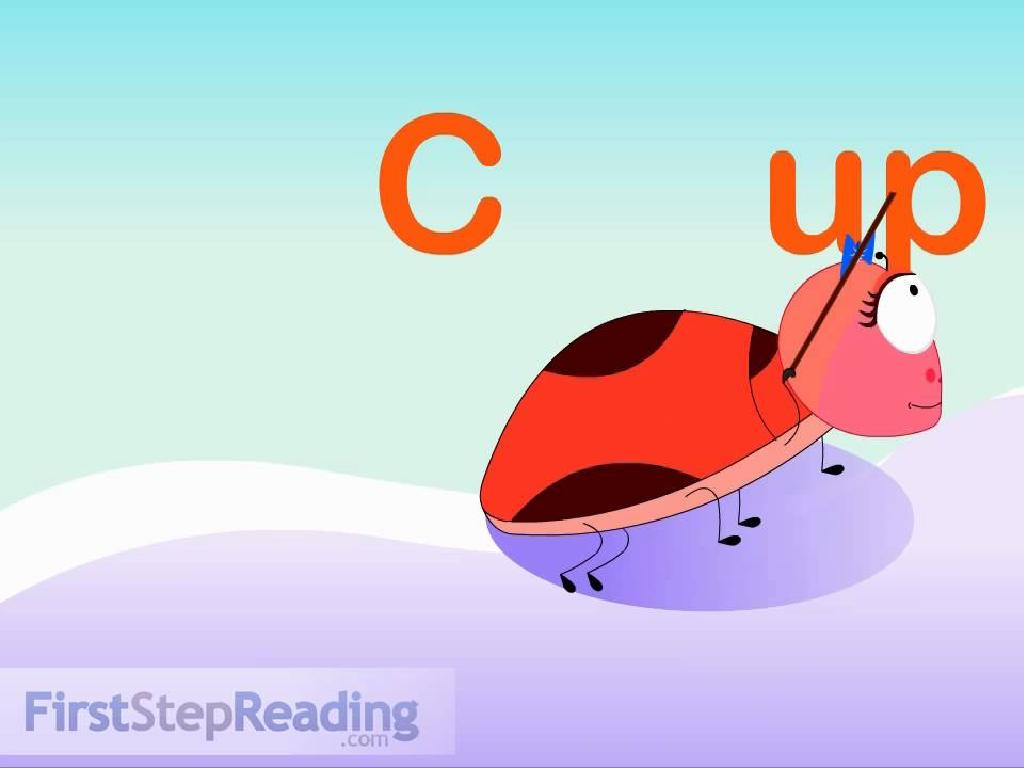Choose The Silent E Sentence That Matches The Picture
Subject: Language arts
Grade: Second grade
Topic: Silent E
Please LOG IN to download the presentation. Access is available to registered users only.
View More Content
Welcome to Silent ‘e’ Magic!
– Discover the magic of silent ‘e’
– Silent ‘e’ changes word pronunciation
– Like ‘cap’ becomes ‘cape’, changing the ‘a’ sound
– Find words with silent ‘e’
– Look in books or around you for examples
– Share your silent ‘e’ words in class
– Think of ‘tape’, ‘ride’, ‘note’, and get ready to tell us more
|
This slide introduces the concept of the silent ‘e’ and its impact on word pronunciation. It’s designed to spark curiosity and engagement among second graders by inviting them to explore the ‘magic’ that a silent ‘e’ can cast on words they already know. Encourage the students to think of words that gain a silent ‘e’ and how it changes the way the word sounds. This will help them understand the rule and apply it when reading. During the next class, create a fun activity where students can share the words they’ve found and discuss the changes in pronunciation. This interactive approach reinforces their learning and helps them remember the concept of silent ‘e’.
The Magic of Silent ‘e’
– What is Silent ‘e’?
– It’s an ‘e’ at the end of words we don’t say.
– Silent ‘e’ is a magic wand!
– It changes how we say the word before it.
– ‘cap’ to ‘cape’: The silent ‘e’ effect
– Adding ‘e’ makes the ‘a’ say its name!
– Practice finding silent ‘e’
|
Introduce the concept of silent ‘e’ to the students by explaining that it is an ‘e’ at the end of a word that we do not pronounce. Emphasize the idea that silent ‘e’ acts like a magic wand, changing the sounds of the words it is added to. For example, when we add an ‘e’ to ‘cap’, it becomes ‘cape’, and the ‘a’ now says its name, which is its long vowel sound. Encourage students to practice by finding words with silent ‘e’ and noticing how it changes the pronunciation of the word. Provide a list of words for them to convert by adding silent ‘e’ and ask them to read both versions aloud. This will help them understand the power of silent ‘e’ in phonics.
Silent ‘e’ in Action
– ‘Hop’ transforms into ‘hope’
– Notice how ‘hop’ gets a long ‘o’ sound with an ‘e’ at the end?
– ‘Bit’ changes to ‘bite’
– The ‘i’ in ‘bit’ sounds like ‘eye’ when we add an ‘e’.
– Silent ‘e’ makes vowels say their name
– Practice matching words with pictures
|
This slide is designed to help students understand the concept of the silent ‘e’ and its effect on preceding vowels. By showing the transformation of simple words like ‘hop’ to ‘hope’ and ‘bit’ to ‘bite’, students can see and hear the difference the silent ‘e’ makes. Emphasize the pronunciation changes and explain that the silent ‘e’ often makes the vowel before it say its name, which is its long sound. Encourage students to practice by matching words to pictures that illustrate both the short vowel sound and the long vowel sound with the silent ‘e’. This will help reinforce the concept through visual and auditory learning.
Silent ‘e’ Matching Game
– Match words with pictures
– Find the silent ‘e’ in sentences
– Look for the word that has a silent ‘e’ and makes sense with the picture
– Example: kit or kite flying?
– ‘Kit’ or ‘kite’? Only ‘kite’ has a silent ‘e’ and can fly
– Share your answers with the class
|
This slide introduces a matching game to help students understand the concept of silent ‘e’ and its effect on word meaning. Display pictures and ask students to choose the correct sentence that matches the picture, focusing on the word with a silent ‘e’. For example, show images of a ‘kit’ and a ‘kite’. Ask students which one can fly in the sky, guiding them to choose ‘kite’ because it has a silent ‘e’ and fits the context. Encourage students to explain their choices. This activity will help reinforce their understanding of silent ‘e’ and its role in changing the meaning of words. Prepare several examples with pictures and corresponding sentences for the students to work on in class.
Practice Time: Spot the Silent ‘e’
– Find the silent ‘e’ in words
– Read sentences aloud
– Choose sentences with silent ‘e’
– Does the sentence have a word like ‘cake’ or ‘hope’?
– Silent ‘e’ makes vowels say their name
– Like in ‘cape’ instead of ‘cap’
|
This slide is for a class activity where students will practice identifying the silent ‘e’ in words. The activity will help reinforce the concept that a silent ‘e’ at the end of a word can change the vowel’s sound to its name (long vowel sound). For example, ‘cap’ becomes ‘cape’ with a silent ‘e’, changing the vowel sound from short to long. Encourage students to read sentences out loud and listen for the long vowel sounds. This will help them determine which sentences contain words with a silent ‘e’. Prepare a list of sentences with and without silent ‘e’ words for the students to practice with. You can also include pictures that represent words with silent ‘e’ to help visual learners.
Silent ‘e’ Adventure
– Join the silent ‘e’ story adventure
– Listen carefully for silent ‘e’ words
– Words like ‘cake’, ‘hope’, and ‘time’ have a silent ‘e’
– Raise your hand to spot them
– Practice makes perfect with silent ‘e’
– The more we practice, the better we’ll get at recognizing silent ‘e’ words!
|
This slide is designed to engage second-grade students in an interactive reading activity focused on identifying words with a silent ‘e’. As you read the story aloud, pause slightly after silent ‘e’ words to give students a chance to recognize and raise their hands. Encourage participation and praise correct identifications to reinforce learning. After the story, discuss how the silent ‘e’ changes the pronunciation of words, making a short vowel sound into a long vowel sound. This activity will help students become more familiar with the concept of silent ‘e’ and its effect on word pronunciation.
Class Activity: Magic ‘e’ Story Creators
– Become word magicians
– Craft a story with silent ‘e’
– Use words like ‘tape’, ‘ride’, ‘plane’, and ‘cube’
– Illustrate your silent ‘e’ story
– Draw a picture that shows your story
– Share your magic with the class
|
In this activity, students will apply their knowledge of silent ‘e’ by creating their own stories. Encourage them to think of words that change meaning with the addition of silent ‘e’, such as ‘cap’ to ‘cape’ or ‘tap’ to ‘tape’. They should write a few sentences using these words and then draw a picture that represents their story. This will help them visualize the concept and remember the words better. For the next class, prepare to have each student present their story and picture, explaining how the silent ‘e’ changes each word. Possible variations of the activity could include group story creation, silent ‘e’ word hunts, or matching games with silent ‘e’ words and pictures.
Celebrating Silent ‘e’ Magicians!
– Congrats, silent ‘e’ magicians!
– Reviewing silent ‘e’ magic
– Silent ‘e’ makes the vowel say its name
– How did silent ‘e’ change words?
– Think about ‘cap’ becoming ‘cape’ with silent ‘e’
– Share your silent ‘e’ examples
– Let’s hear some words you transformed!
|
This slide is meant to wrap up the lesson on silent ‘e’. Start by praising the students for their hard work. Then, revisit the key points of the lesson, emphasizing how the silent ‘e’ changes the pronunciation of vowels in words, making them say their name (long vowel sounds). Ask the students to recall how words they learned today were altered by the addition of silent ‘e’. Encourage them to provide examples from the lesson, reinforcing their understanding. This review solidifies the concept and prepares them for future reading and spelling tasks involving silent ‘e’.





